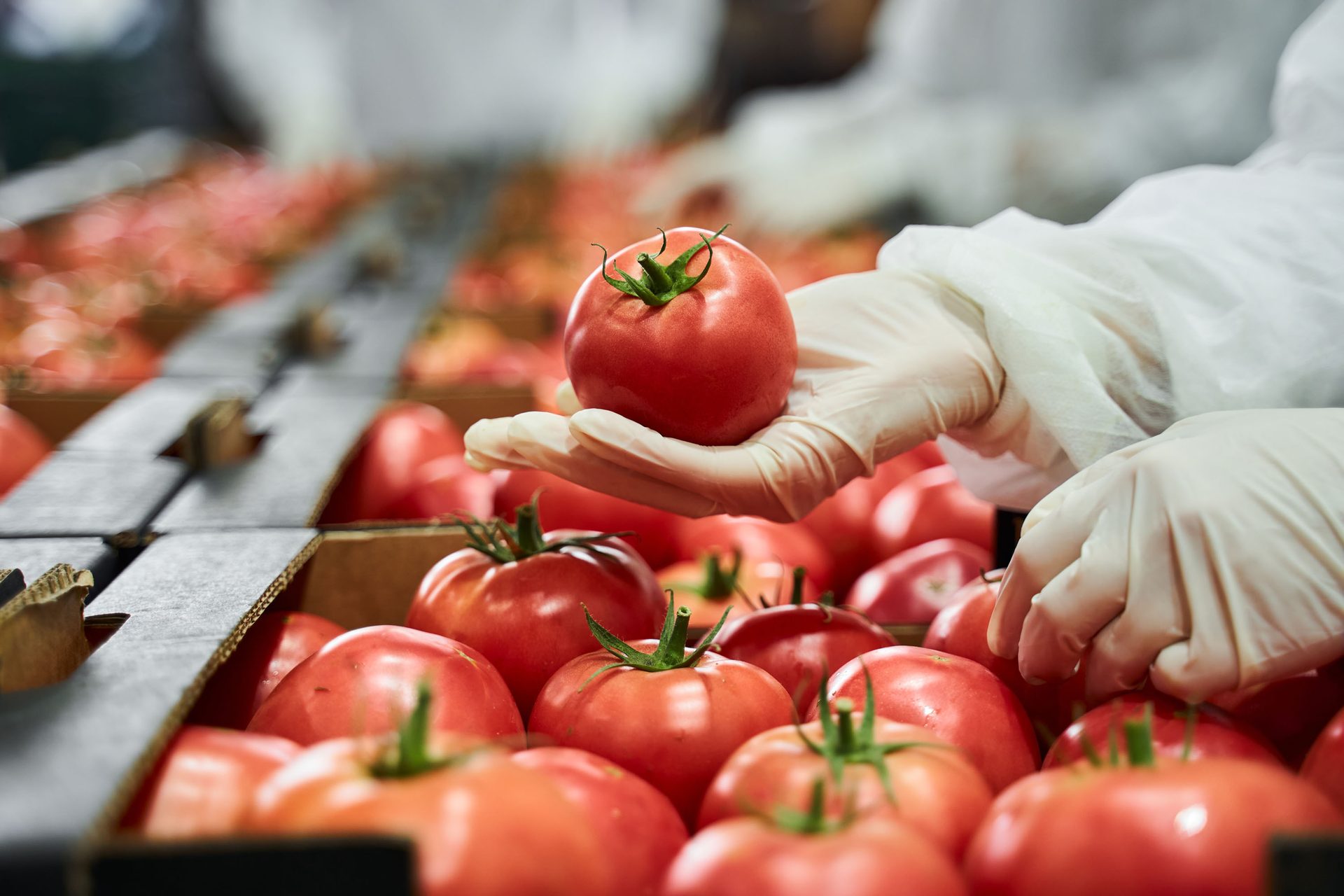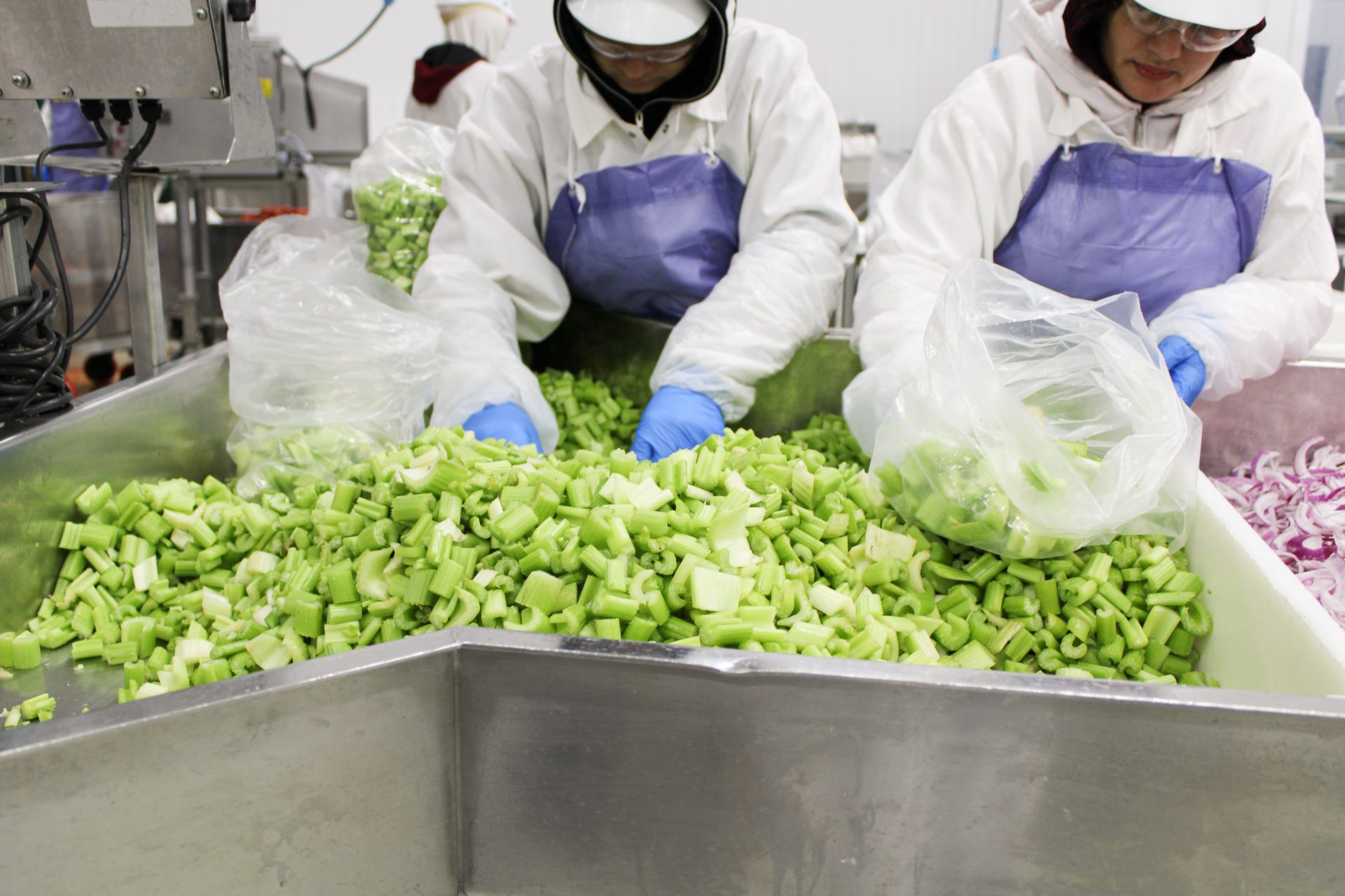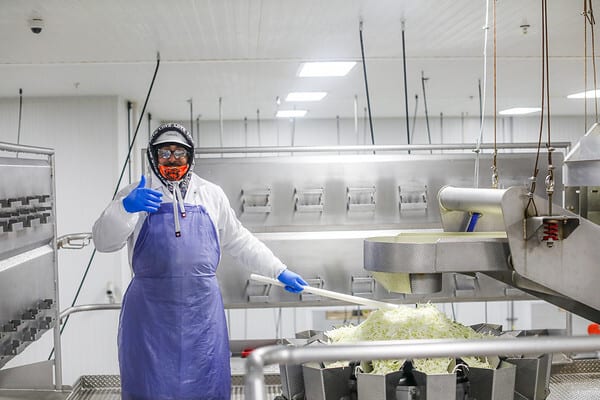SUPPLY CHAIN
By Mike Buelow, Food Safety Quality Assurance (FSQA) Sanitation Manager, Cut Fresh LLC
At Cut Fresh, 'All Hands On Deck' for Food Safety
An FSQA supervisor in the produce industry shares his story of taking a "hands-on" approach to food safety and sanitation

Image credit: YakobchukOlena/iStock/Getty Images Plus via Getty Images
SCROLL DOWN
Food safety is on everyone's mind in the food supply chain, from farmer to processor to distributor to retailer to the consumer. The effort to ensure food safety throughout the supply chain is aided by numerous resources and efforts. Food safety has many different definitions; one of the best definitions I have come across is, "Food safety can be defined as the ways and methods that are adopted to ensure that food is fit to be eaten." In other words, food safety aims to avoid, minimize, and control risks that are biological, chemical, and physical in nature, and can cause illnesses or injuries associated with foods.
While most businesses in the food processing industry have detailed procedures, standards, and best practices to ensure food safety, we at Cut Fresh LLC have learned via experience that having a hands-on approach is what makes food safety achieve success, in addition to established procedures and practices. The human element in all food safety efforts is extremely important.
The Value of Experience and Technical Training
In my role as the Food Safety and Quality Assurance (FSQA) Sanitation Manager at Cut Fresh, I take food safety and sanitation very seriously. The consequences for food safety lapses are severe. According to the Centers for Disease Control and Prevention (CDC), every year in America, 48 million people get sick from a foodborne illness. Some 128,000 are hospitalized, and 3,000 people die.1 As the FSQA Sanitation Manager, I feel I have the most important job at my plant.
Cut Fresh has a number of best practices, tight procedures, auditing, and certification efforts in place to ensure the highest quality of our products, as well as the highest standards of food safety and sanitation (Figure 1). As a food safety professional, there is one key learning experience that I have been fortunate to attain throughout my career. I received a great deal of food safety technical training while serving in the U.S. Navy as a Mess Management Culinary Specialist. I became certified in food safety and sanitation, alongside being certified by the Navy's Bureau of Medicine and Surgery. I was part of the 7th fleet food safety division, and often taught classes in food safety. I have been able to apply that skillset here at Cut Fresh. The company has leveraged my experience and the knowledge of others on staff to establish top-tier food safety and quality practices in the produce industry. This has earned us the highest Food Safety Certification rating by our Global Food Safety Initiative (GFSI)-recognized certification program—100 percent.
FIGURE 1. Cut Fresh has a number of best practices, auditing, and certification efforts in place to ensure the highest standards of food safety, food quality, and sanitation (Image courtesy of Cut Fresh LLC / Anna Patsakham)

I have learned a lot over my career, and I bring those key learnings to my job every day. However, if there is one thing I learned from my training in the Navy and my career, it's that if you are in charge of food safety, you have to be hands-on. You cannot control food safety by sitting behind a desk.
"I often come to work on third shift and work alongside the sanitation team, cleaning and observing the best practices we have in place for sanitation."

Training is Key to the Human Element of Food Safety
At Cut Fresh, we have developed a 21-day training program for food safety. Any new QA technician, supervisor, or assistant FSQA manager must complete the program. It covers essential knowledge about produce products, how to keep the food we produce safe, and how to prevent a recall. We have also developed a training program for all new sanitation team members. For example, new hires are required to view videos on the steps of wet sanitation and Listeria prevention.
A "Hands-On" Approach is Essential to Food Safety
As I stated previously, you cannot ensure food safety sitting behind a desk. I often come to work on third shift and work alongside the sanitation team, cleaning and observing the best practices we have in place for sanitation. This way, I know that workers are following our Sanitation Standard Operating Procedures (SSOPs) and fully embrace our efforts around food safety and sanitation.
Our sanitation program has evolved over the years. For example, when we first implemented a sanitation program at Cut Fresh, our senior QA technician would conduct a basic visual inspection to ensure that operations and facilities were clean every morning prior to production. We amended this right after I started work, as these methods did not conform to standard practices and our overall experience in the field. After joining Cut Fresh, I assumed a great deal of responsibility for sanitation practices, and I knew we had to be hands-on in every phase to make an impact. Supervisors, including myself, needed to ensure that the environment was clean prior to start of production, and that standards and best practices were being followed during each shift.
I arrive at the plant at 6 A.M. every morning to conduct a thorough inspection with a flashlight in hand. If I find anything that is dirty, the corrective action is to re-clean following the steps of wet sanitation. Our sanitation supervisor and leads also carry flashlights so they can inspect operations prior to my walk-through.
By being hands-on in their approach to food safety, sanitation professionals understand the importance of doing a thorough job and taking their responsibilities seriously. These actions can make the difference between ensuring high-quality, safe food vs. having a recall. Equipment is tested each morning with ATP swabs, and production does not start without getting results that confirm the environment is clean. Once a week, we use sponge swabs to ensure microbiological sanitation and send them to an outside lab for testing.
Embracing Commitment and Ownership
One best practice we use with our sanitation team is to treat them with appreciative rewards, like pizza and treats. It's our way of showing the team that we care about the job they are doing. It also reinforces commitment and ownership among the sanitation team. It can be hard to find good sanitation team workers, and getting them to work third shift is even harder. With positive affirmation, we appreciate the sanitation team for ensuring a clean workplace and supporting best practices. Praise goes a long way in this industry, and our hands-on approach has paid off over the years in team member commitment.
When I became a certified Preventive Controls Qualified Individual (PCQI), the instructor emphasized the importance of being hands-on with food safety—a value that reinforces Cut Fresh's strong food safety and sanitation programs.
"At Cut Fresh, we hold pre-shift meetings twice a week for the first, middle, and second shift production teams to review both food safety and worker safety."

Certification is the "Proof in the Pudding"
At Cut Fresh, we employ a number of certifications, evaluations, and testing tools to ensure that we are meeting the highest quality and safety standards. As mentioned, we follow a GFSI-recognized audit certification program that has been used for many years in different areas of the food industry, particularly produce. We subscribe to all the conditions that come under the certification program, including details such as the requirement to initial every piece of paperwork concerning food safety, quality, and sanitation, and to provide sign-off for procedures.
FIGURE 2. Cut Fresh's high food safety and sanitation standards have earned it audit certifications of 99 percent for 2023 and 100 percent for 2024; author Mike Buelow gives a thumbs-up from the plant (Image courtesy of Cut Fresh LLC / Christina Noel)

Following these procedures has paid off for Cut Fresh, with recent audit certifications of 99 percent for 2023 and 100 percent for 2024. We like to say, "When it comes to food safety and sanitation, at Cut Fresh, we set the standard that everyone else follows" (Figure 2).
One strategy I have found beneficial for food safety assurance is to hold pre-shift meetings—a practice I learned in the Navy. At Cut Fresh, we hold pre-shift meetings twice a week for the first, middle, and second shift production teams to review both food safety and worker safety. We cover food safety issues, quality issues, customer complaints (if any), production issues, maintenance issues, Good Manufacturing Practices (GMPs), the proper use of personal protective equipment (PPE), upcoming audits, and reminders of what we need to be doing every day to keep our food safe. These meetings have also enabled a very low incidence of workplace injury for our plant.
The pre-shift meetings are usually kept short to focus employees' attention, and we work to involve each employee in the meeting. We ask questions such as, "What are five of the GMPs we follow?" and "What do we need to do every day in production to keep food safe?" Employees are eager to provide answers and engage.
At Cut Fresh, we're proud that all of our production team members know they share responsibility with the sanitation team for ensuring the microbiological safety of the environment throughout the day. Every production employee knows they are responsible for keeping food safe, which comes from total buy-in by the staff.
“Each step in the 'rings of defense' must be used consciously and with proper consideration, as it may be obvious what caused the noncompliance, and its resolution may be straightforward, simple, and not costly.”


Hands-On is a Big Part of Food Safety Success
If you are looking to build a top-notch food safety and sanitation program at your plant, consider your activities from a hands-on perspective. To put it into military language, "You can't steer a ship from behind a desk; you have to be in charge at the helm, steering in the right direction."
Steer your company to excellence in food safety and sanitation, and your mission will be accomplished.
References
- U.S. Centers for Disease Control and Prevention. "Estimates of Foodborne Illness in the United States." November 5, 2018. https://www.cdc.gov/foodborneburden/index.html.
Mike Buelow is the Food Safety Quality Assurance (FSQA) Sanitation Manager for Cut Fresh LLC, where he makes sure that every Cut Fresh batch of produce is held to the highest safety and quality standards. Upon graduating from St. Thomas More High School, Buelow entered the U.S. Navy at the age of 17. He became a Mess Management Specialist, where he learned the "Navy way" of baking, cooking, food safety, and sanitation. While serving in the Navy, he became certified in food safety and sanitation. After graduating from Mess Specialist training, Buelow proudly served on the nuclear submarine USS Theodore Roosevelt, and then on the aircraft carrier USS Coral Sea.

